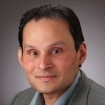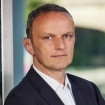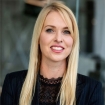{{item.title}}
{{item.text}}

Download PDF - {{item.damSize}}
{{item.text}}
Our Fit for Growth* approach is a proven model for unlocking performance that helps companies manage their cost in a more strategic way, allowing them to cut costs and grow stronger at the same time. We offer a clear path to emerging stronger from the COVID-19 crisis by helping you re-assess strategic priorities across the value chain to thrive in the new normal.
*Fit for Growth is a registered service mark of PwC Strategy& LLC in the United States.
Take a look inside the Fit for Growth mini book, a summary of the Fit for Growth book published by Wiley.
What sets the world’s top companies apart from their rivals? See how they become fit for growth by building competitive muscle and cutting the corporate fat.
A quantitative measure of how well a company connects its cost and growth agendas.
{{item.text}}

{{item.text}}
We take an end-to-end view of the value chain to help our clients through the entire process of getting fit and ready to grow. We begin by assessing a company's strategy and determining the few differentiating capabilities it needs to thrive.
We then help institutionalize a more strategic approach to cost management by shifting investment to "good" costs and away from "bad", redirecting spending to the areas that lay the groundwork for sustainable, long-term growth.
A Fit for Growth business transformation frequently touches every part of a company — and our collaborative approach is designed to support you at every stage of that journey.
We help our clients design and implement a fit-for-purpose operating model, one that holistically supports their strategy and leverages the company's people and culture – all the formal and informal elements that affect success.
Our unique Organizational DNA approach helps focus on the underlying factors that together define an organization's "personality" and help explain its performance. Getting factors like decision rights and information flow right — within the organization’s structure and culture — will supercharge your organization.
We help our clients optimize overhead functions to best enable their strategy and achieve greater cost efficiency.
We support our clients across the full spectrum of implementation, including benchmarking, adopting lean headquarters models, setting up and optimizing shared services, leveraging the benefits of outsourcing and offshoring, redesigning end-to-end business processes, and managing internal demand to maximize overhead efficiency.
We help our clients transform procurement into an indispensable part of their strategic goals and overall competitiveness.
We partner with companies to improve their sourcing capabilities to capture significant savings in both direct and indirect material and services, and to manage changes in the sourcing organization, partnerships, IT, and performance management.
We help our clients optimize their manufacturing capabilities by helping assess overall manufacturing competitiveness, determining the status of manufacturing technology, defining the right make-versus-buy concepts, and establishing new global manufacturing networks.
We also support them to drive cost-improvement programs build lean management and lean Six Sigma capabilities, and improve quality or throughput.
We help our clients develop and implement better ways to manage complexity.
We support them in designing product and service architectures that maximize commonalities and minimize differences, defining each product or service in a way that simplifies both innovation and delivery.
We work with our clients to focus technologies and processes in the delivery system to simplify it, and assist with implementing tailored business streams that segment the process-support infrastructure, typically based on stability, predictability, or difficulty.
We help our clients’ supply chains achieve top-line growth through geographic reach and differentiated service and drive improvements in bottom-line performance through scale and efficiency.
We work with companies to develop and embed a robust set of capabilities for optimizing supply, manufacturing, and distribution networks, tailoring product flows, managing complexity, integrating demand management and operations planning, and driving sustainability and continuous improvement.
We help our clients thrive in today's competitive environment — in which customers may not always be right, but they certainly know what they want.
Our approach includes optimizing the marketing mix; analyzing the use of customer-segmented go-to-market models versus product-driven go-to-market models; improving sales channels, sales-force effectiveness, and back-office sales; boosting marketing efforts with data-driven decisions; and supporting IT operations.
We help our clients develop a powerful innovation capability that supports their business strategy by focusing on innovation that is both technically and economically sound.
We advise companies on setting strategy, making needed process and organizational changes, developing new products, and assessing the scientific and technological robustness of their offerings.
We help our clients succeed in the "new normal" for IT: shrinking budgets paired with pressure drive top-line growth. Even in this environment, IT can be a strategic enabler of business success if companies reduce costs thoughtfully and support capabilities where it counts.
We help companies identify the IT capabilities that best align with their overall business strategy to drive value. We then support them in increasing the efficiency and effectiveness of their IT through IT strategy, business and IT alignment, organization, governance, architecture, and infrastructure, as well as sourcing and outsourcing.
We help companies ensure they're investing in the most important parts of their IT portfolio and motivate IT talent to deliver world-class performance.
We help our clients use their culture as a powerful tool in their Fit for Growth transformation process, because people initiatives spell the difference between success and failure in any large change program. The key to success is to work with and within your culture. We start by identifying elements of a company's culture that will support its strategic aspirations.
We then use a systematic approach, working with our clients to understand the enablers of change and the barriers to it that are unique to their company. Finally, we help deploy both informal and formal levers to promote key behaviors that shift mind-sets and produce a long-term impact on performance.



Chantal Maritz
Partner | Payments Transformation Leader, Strategy& South Africa
Tel: +27 (0) 66 229 1202

